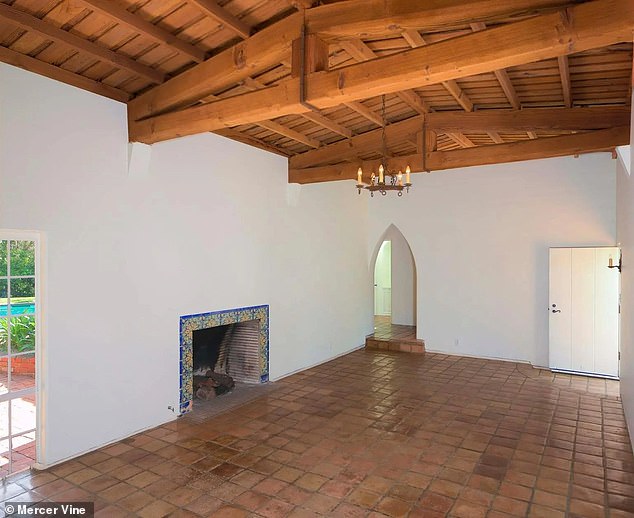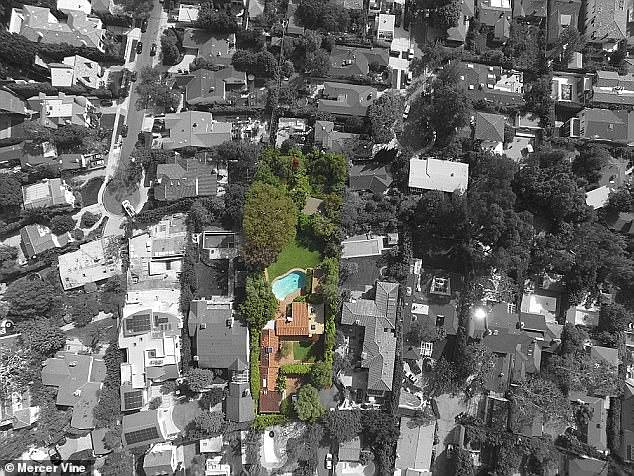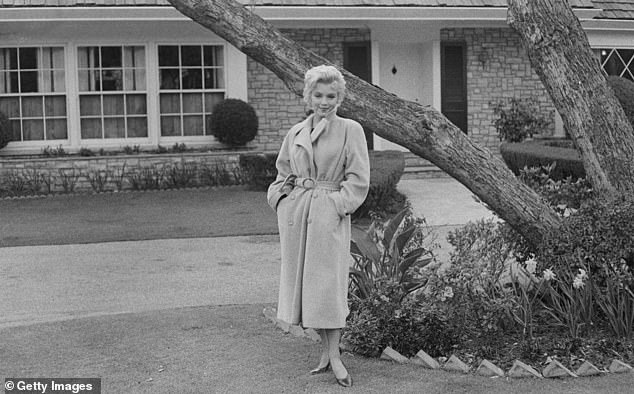Marilyn Monroe’s home where she died of a drug overdose in 1962 will NOT be demolished with Los Angeles City Council voting to designate it a historic and cultural landmark
The Los Angeles City Council voted Friday to begin a process to designate Marilyn Monroe’s former home, where she died of a drug overdose in 1962, as a historic and cultural landmark.
This news comes after the new owner, Glory of the Snow Trust, applied for permission to demolish the estate in August.
The request was initially approved by an inspector on September 5 and the intention to demolish the home was unclear.
Councilwoman Traci Park introduced initial consideration to historically preserve the Spanish Colonial-style home in L.A.’s Brentwood neighborhood and was unanimously approved the same day, according to spokeswoman Jamie Paige.
Monroe purchased the 2,900-square-foot, four-bedroom, three-bathroom house in the early 1960s for $75,000.
Councilwoman Traci Park introduced the preservation of Monroe’s Brentwood House and posted her victory in temporarily halting the demolition on Instagram

Monroe purchased the single-story, 2,900-square-foot, four-bedroom, three-bath home in the early 1960s for $75,000.

Park told KCAL News, “Every detail of the house, from the wood-beam ceilings to the tiles she hand-picked while traveling around the world. The house reflects her personal character
This was her first home owned alone after the end of her third marriage to playwright Arthur Miller.
The American actress, model and singer was found dead in the bedroom of her Brentwood home in August 1962 at the age of 36.
The cause of death was determined to be acute barbiturate poisoning, a type of depressant.
That hasn’t stopped the conspiracy theories, however, as rumors still persist about what actually happened to Monroe at the time of her death.
A 2022 Netflix documentary sidestepped suspicions that she was murdered because of her romantic relationships with former President John F. Kennedy and his brother Robert Kennedy.
For many, the house remains a reminder of the iconic actress that they hope will continue for many years to come.
Park said KCAL News: ‘Every detail of the house, from the wooden beamed ceilings to the tiles she hand-picked during her journey around the world. The home reflects her personal character.’
The half-acre estate with a pool and guest house was purchased by Glory of the Snow LLC for $7.25 million in 2017 and then managed by a hedge fund director.
At some point in the past six years, the home was put back up for sale and sold earlier this year for $8.25 million.

The half-acre estate with a pool and guest house was purchased by Glory of the Snow LLC for $7.25 million in 2017 and then managed by a hedge fund director.

A petition was created on Change.org entitled ‘Stop Demolition Marilyn MONROE’S house’ and quickly gained 3,000 signatures within 24 hours

This was her first home owned alone after the end of her third marriage to playwright Arthur Miller
Outrage quickly erupted on social media when the initial decision to demolish the gated four-bedroom hacienda at the end of a cul-de-sac was announced.
The parties were divided, as some thought her house should be preserved and others not so much.
A petition has been created at Change.org titled ‘Stop Demolition Marilyn MONROE’S house’ and quickly received 3,000 signatures within 24 hours.
Scott Fortner of the Marilyn Monroe Collection, who is also a mega fan, told KCLA News, “This house is the equivalent of Graceland. It’s that place where people go to remember Marilyn and to remember that she was happy here and really wanted to start something new – a new chapter in her life and just to commemorate the fact that she died there. 1962.’
A spokesperson for the LA Department of City Planning said the property was previously designated a landmark in 2013 after describing its association with Monroe as “potentially significant.”
After assessment, they determined that ‘more research’ was needed to move forward with the conservation of the estate.
The singer of ‘Diamond’s Are a Girl’s Best Friend’ named the house ‘Cursum Perficio’, which means ‘My journey ends here’ in Latin, and had it written out on the tiles of the veranda at the front of the house.
The status of the property, according to the motion itself, was: “a temporary stay of demolition, substantial modification or removal of such proposed location or structuring pending designation.”
